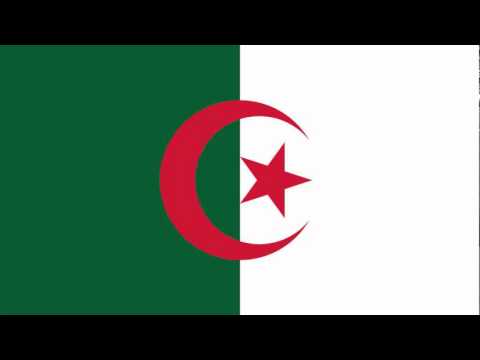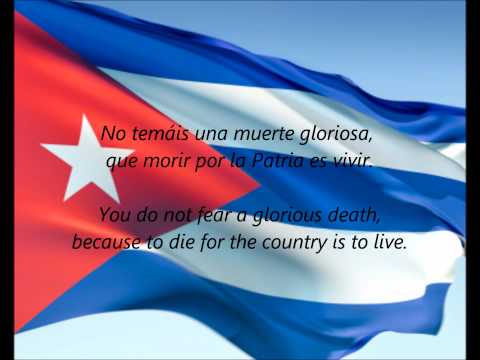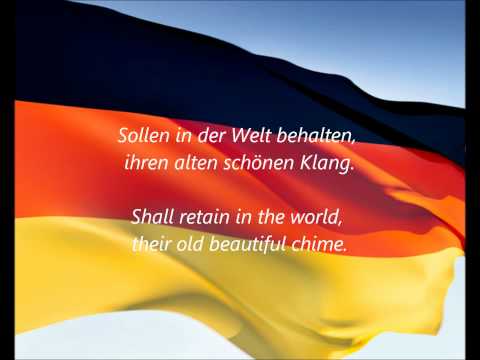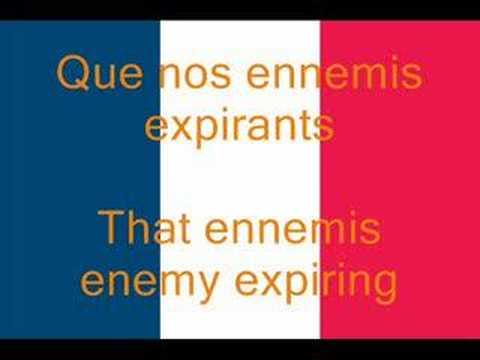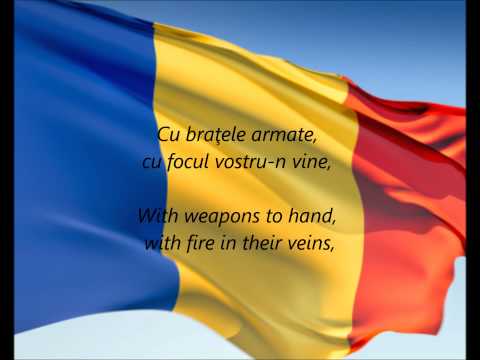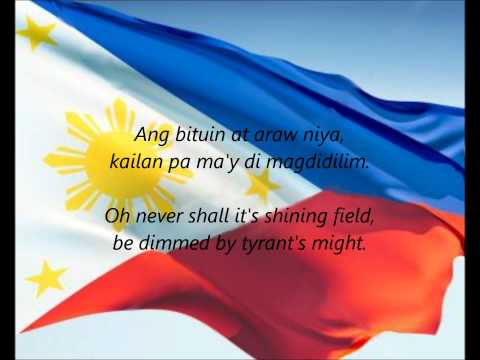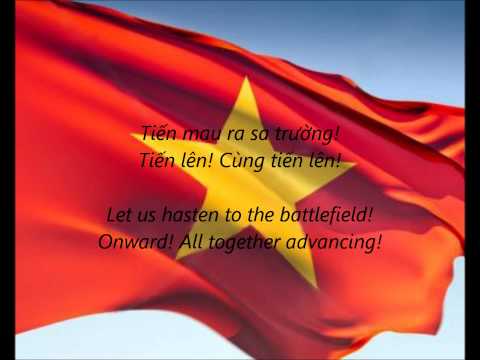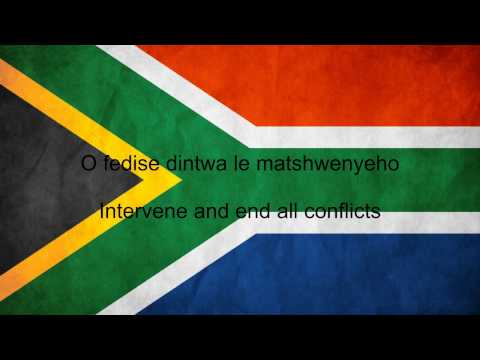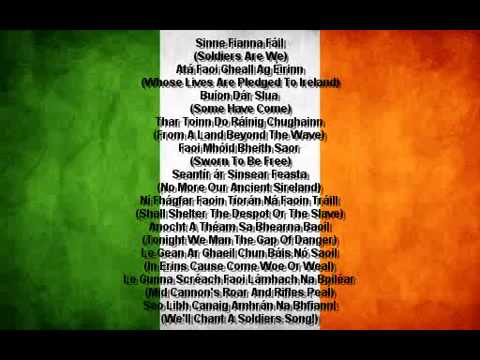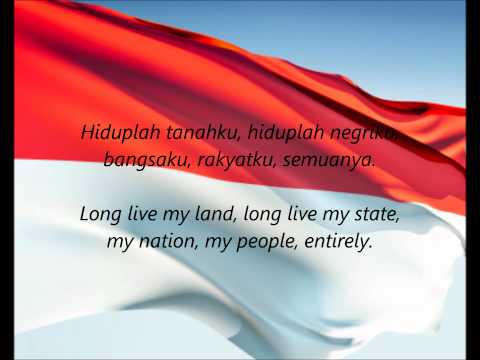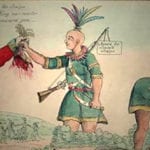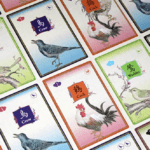Several nations with these pro-uprising anthems have edited them to be less warlike while others have maintained the original, explicit lyrics. Most songs on this list were not written in English, but we have provided the English translations for easier understanding.
10 ‘Qassaman’Algeria
Algeria’s “Qassaman” (“We Pledge” or “The Pledge”) would win the award for the most vicious of all national anthems if such an award existed. The lyrics were penned by author and revolutionist Moufdi Zakaria during his internment at the Serkaji-Barberousse Prison, where he had been incarcerated by the French colonists. The first five lines of the anthem promise the French colonists a deadly revolution. It goes: We swear by the lightning that destroys, By the streams of generous blood being shed, By the bright flags that wave, Flying proudly on the high mountains, That we are in revolt, whether to live or to die. Just so the French colonists knew that the revolutionaries meant business, the song also says: “So we have taken the noise of gunpowder as our rhythm and the sound of machine guns as our melody.” In an act of defiance, the lyrics even mention France, not once but twice:[1] O France! Past is the time of palavers We closed it as we close a book O France! The day to settle the accounts has come! Prepare yourself! Here is our answer! The verdict, our Revolution will return it. True to their word, the Algerians fought a war against France and won. They adopted the song as their national anthem when they gained independence on July 5, 1962.
9 ‘La Bayamesa’Cuba
The groundwork for Cuba’s independence and national anthem was laid on August 13, 1867, when some revolutionaries met in the home of Cuban lawyer and revolutionist Pedro Figueredo. By morning, the group had created a melody called “La Bayamesa” in honor of Bayamo, the name of the town where the revolution started on October 10, 1868. It ended with the defeat of Spain 10 days later. As Spain surrendered, Figueredo added lyrics to the melody while seated on his horse. This was at the behest of the army and enthusiastic crowd, who could not believe they had defeated Spain. The song was later adopted as the national anthem of Cuba after the removal of several sensitive stanzas criticizing Spain. This was necessary because Cubans have close family ties with Spain. Besides, several high-ranking Spanish officers had fought on the side of the revolutionists. The original song contained anti-Spanish lyrics like:[2] Fear not; the fierce Iberian Are cowards as every tyrant. Do not resist the angry Cuban Forever their empire fell. Free Cuba! Spain already died.
8 ‘Deutschlandlied’Germany
“Deutschlandlied” (“Song of Germany”) started off as a tune specifically written for Austrian Emperor Francis in 1797. In 1841, August Heinrich Hoffman von Fallersleben added lyrics to the melody to form the backbone of what would become Germany’s national anthem. The lyrics called for the merging of the several German empires to form a single, unified German state. The song had several lines containing the words Deutschland, Deutschland uber alles (“Germany, Germany above all”).[3] In 1840, a year before Hoffman von Fallersleben wrote the song, the Germans started agitating for the creation of a united German state due to fears that France was planning to invade the uncooperative empires. The song followed in 1841, and a revolution spread across the German empires in 1848. Citizens demanded improved representation in the monarch-led governments. The revolution was inspired by the 1848 French revolution and a serious famine raging through the empires. “Deutschlandlied” was one of the symbols of the uprising, which is known today as the March Revolution of 1848. The song became the German national anthem in 1922 and remained in use in West Germany after Germany split into two countries following World War II. However, when both countries reunited in 1990, the third stanza became the national anthem of the unified Germany.
7 ‘La Marseillaise’France
“La Marseillaise” was composed by French army officer and musician Claude-Joseph Rouget de Lisle on the night of April 24, 1792, during the French Revolution. France had declared war on Austria four days earlier. The mayor of Strasbourg, which happened to be the same town where Rouget de Lisle was based, asked that someone write a marching song for the army. Rouget de Lisle took up the challenge and wrote “Chant de guerre de l’armee du Rhin” (“War Song of the Army of the Rhine”). However, it was better known as “La Marseillaise,” which later became its official name because it was mostly sung by soldiers from Marseille. France adopted the marching song as its national anthem on July 14, 1795. Napoleon Bonaparte banned the anthem due to its revolutionary lyrics while he was in power. So did King Louis XVIII and Napoleon III. The anthem finally returned in 1879 and was never outlawed again. As written by Rouget de Lisle, the original song had six verses. But two more were added over the years. However, only the first and sixth verses, complete with a graphic description of war, are usually sung. The song calls on French citizens to raise arms against the “savage” tyrants who want to cut their throats. Then it orders French citizens to kill the tyrants so that their impure blood will water the French fields.[4]
6 ‘Desteapta-te, Romane!’Romania
“Desteapta-te, romane!” (“Awaken thee, Romanian!”) was originally a poem titled “Un rasunet” (“An echo”). It was written by Romanian poet Andrei Muresanu in support of the Romanian revolution of 1848. The uprising was part of the Revolutions of 1848 when citizens of several European states engaged in widespread protests over issues relating to famine and taxes. The revolution in Romania started on June 11, 1848, and the poem was sung for the first time on June 29, 1848. Here are the first four lines of the purely nationalist anthem: Awaken thee, Romanian, shake off the deadly slumber The scourge of inauspicious barbarian tyrannies And now or never to a bright horizon clamber That shall to shame put all your nocuous enemies. The song ends with: We’d rather die in battle, in elevated glory Than live again enslaved on our ancestral land. Romanians often turn to the anthem for motivation during wars and revolutions. They sang it during the Independence War of 1877–1878, the two World Wars, and the December 1989 anti-Communist revolution.[5]
5 ‘Lupang Hinirang’Philippines
On June 11, 1898, Philippine composer Julian Felipe played the tune that would later be used for the Philippine national anthem. He played it for General Emilio Aguinaldo, who had requested a melody that would unite Filipinos in a revolution against Spain. The song was first performed for the public on June 12, 1898, when Aguinaldo declared the Philippines to be an independent nation. Felipe called the melody “The Marcha Filipino Magdalo” after Aguinaldo’s wartime nickname and the name of his army. What followed was a revolution that ended with Spain ceding the troubled colony to the United States in December 1898. A few months later in February 1899, the Filipino-American War broke out as the Philippines fought for independence from its new colonists.[6] It was during this war that Jose Palma, a Filipino soldier, added the lyrics to Felipe’s tune. The song was sung throughout the war, which abruptly ended when Aguinaldo was captured in March 1901. The United States banned the song. But it became the anthem of the Philippines when the country became independent in 1946. The song was renamed “Lupang Hinirang” (“Chosen Land”) and ends with the lines: Our joy is when someone comes to oppress thee Is to die while protecting thee from them.
4 ‘Tien Quan Ca’Vietnam
In 1944, Nguyen Van Cao wrote a song titled “Tian Quan Ca” (“Marching Forward”) in support of Vietnam’s impending freedom. The Democratic Republic of Vietnam declared independence a year later and adopted “Tian Quan Ca” as its national anthem. Soon, the country found itself in a deadly war with its French colonists. The war ended with the defeat of France in 1954. The radical anthem contains threatening lyrics like “the distant rumbling of the guns passes over the bodies of our foes” and “for too long we have swallowed our hatred.” One verse even clarified that Vietnam was prepared for a war: “The path to glory is built by the bodies of our foes.” North Vietnam continued using the national anthem after it split from South Vietnam, but the song became the official anthem of the unified Vietnam when the two countries reunited. The national assembly proposed changing the anthem at that time but gave up the idea after citizens opposed the proposal. However, the national assembly is considering changing the anthem again. Legislators in support of a new one claim that the lyrics of “Tian Quan Ca” are no longer relevant because Vietnam is no longer at war or clamoring for independence.[7]
3 South African National Anthem
The South African national anthem is the product of the merging of the two national anthems that South Africa had at the end of apartheid. From 1994 to 1997, the two anthems were “Nkosi Sikelel’ iAfrika” (“God Bless Africa”) and “Die Stem van Suid-Afrika” (“The Call of South Africa”). Both songs were merged in 1997 to create a new anthem. The lyrics use five of South Africa’s most commonly spoken 11 official languages: Xhosa, Zulu, Sesotho, Afrikaans, and English. “Nkosi Sikelel’ iAfrika” is the rebellious one of the two anthems. In 1897, it was written by schoolteacher Enoch Sontonga. Originally, the song was a church hymn, but it became a song of resistance during the apartheid regime. On the other hand, “Die Stem van Suid-Afrika” was a poem written by C.J. Langenhoven in 1918. After being set to music a few years later, it ultimately became South Africa’s national anthem alongside the United Kingdom’s “God Save the Queen” from 1936 to 1957 according to our sources. At that time, “Die Stem van Suid-Afrika” became the country’s only national anthem, which continued until 1994.[8]
2 ‘Amhran na bhFiann’Republic Of Ireland
In 1907, Peadar Kearney, a member of the Irish Republican Brotherhood (which wanted Ireland to be separated from the United Kingdom), wrote a song titled “Amhran na bhFiann” (“The Soldiers’ Song”). The song contained pro-independence lines like: Sworn to be free, No more our ancient sire land Shall shelter the despot or the slave. Kearney later cofounded the Irish Volunteers, who used the song as a marching song during the Easter Rising of 1916. The Irish Volunteers later metamorphosed into the Irish Republican Army, which fought a guerrilla war against the United Kingdom between 1919 and 1921. The result was the splitting of Ireland into Northern Ireland, which remained a part of the United Kingdom, and Southern Ireland, which was an independent nation. Southern Ireland became the Irish Free State and then the independent state of Ireland (aka the Republic of Ireland). The Irish Free State adopted “Amhran na bhFiann” as its national anthem in 1926. Before then, the country extensively deliberated over whether it wanted such a radical song as its national anthem. However, its citizens decided to keep the anthem when they realized that the French used a similar pro-revolutionary song as their national anthem. Today, the anthem is often criticized for its divisive lyrics, especially by the citizens of Northern Ireland. These days, the Republic of Ireland’s rugby, hockey, and cricket teams use another song, titled “Ireland’s Call,” in place of their national anthem during international sporting events.[9]
1 ‘Indonesia Raya’Indonesia
“Indonesia Raya” (“Great Indonesia”) was written by Wage Rudolf Soepratman, who presented it at a national youth convention on October 28, 1928, in what is now Jakarta, Indonesia. The song called for the creation of a single state as the successor to the several colonies that formed the Dutch East Indies, which was under the control of the Netherlands. Like other colonial powers of the day, the Netherlands followed a policy of “divide and rule” and divided the Dutch East Indies along ethnic lines, which indirectly turned the citizens against each other. However, the song inspired the creation of an Indonesian nationalist movement that promoted the idea of a single Indonesian successor state. The Dutch never really suppressed the song. They allowed the Indonesians to sing it as long as they replaced several lines containing merdeka, merdeka (“independent and free”) with mulia, mulia (“honorable, honorable”).[10] The Japanese banned the song while they occupied Indonesia during World War II. As a result, Indonesia only adopted “Indonesia Raya” as its national anthem when the country proclaimed its independence in 1945. (To be clear, this was only a proclamation. Indonesia did not actually become independent until late 1949 when the Dutch transferred sovereignty to the United States of Indonesia and independence was formally declared.)
